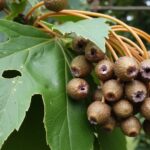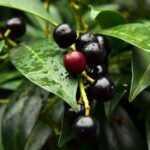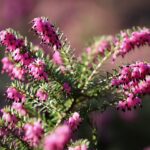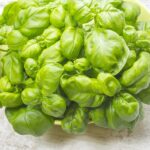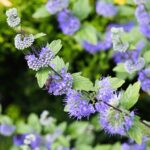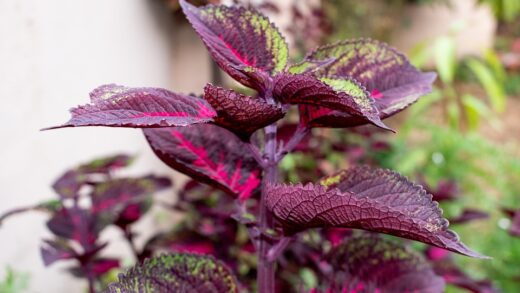As autumn’s vibrant colors fade and the air turns crisp, the focus of care for a Japanese maple shifts towards preparing it for the rigors of winter. While many cultivars are quite hardy, the winter months can present significant challenges, from freezing temperatures and desiccating winds to hungry wildlife. Proper winterization is not about fighting nature, but about providing the right protection to help the tree navigate its dormant period safely. This is especially crucial for young, newly planted trees and for those grown in containers, as they are far more vulnerable than their mature, in-ground counterparts. A few thoughtful preparations in the autumn can make all the difference, ensuring that your elegant maple emerges healthy and ready for vigorous growth in the spring.
Understanding winter dormancy and hardiness
Winter dormancy is a natural and essential part of the Japanese maple’s annual life cycle. As daylight hours shorten and temperatures drop in the autumn, the tree undergoes physiological changes to prepare for the cold. It stops producing chlorophyll, which reveals the brilliant yellow, orange, and red pigments that were hidden by the green all summer. The tree then sheds its leaves to conserve water and energy, and its metabolic processes slow down dramatically. During this resting period, the tree is not dead but is conserving its resources, ready to burst forth with new life when spring arrives.
The ability of a Japanese maple to survive the winter is determined by its hardiness, which is rated using a system of climate zones. Most Japanese maple cultivars are hardy in zones 5 through 8, meaning they can typically withstand minimum winter temperatures ranging from -29°C to -7°C. However, hardiness is not just about surviving the lowest temperature; it’s also about the tree’s ability to withstand other winter stresses like fluctuating temperatures, wind, and sun. It is crucial to select a cultivar that is appropriate for your specific climate zone to give it the best chance of long-term success.
Even within its designated hardiness zone, a Japanese maple can be vulnerable, especially to unseasonable weather events. A sudden, hard freeze in late autumn before the tree has fully hardened off, or a late spring frost that kills the newly emerged, tender leaves, can cause significant damage. Similarly, a winter thaw that encourages the tree to break dormancy prematurely, followed by a return to deep cold, can be very stressful. While you cannot control the weather, you can take steps to mitigate the impact of these events through proper siting and protection.
The age and health of the tree also play a significant role in its winter hardiness. A young tree that has only been in the ground for one or two seasons has a less extensive root system and is more susceptible to cold damage and dehydration than a mature, well-established specimen. Likewise, a tree that was stressed during the growing season by drought, disease, or pest infestation will enter winter in a weakened state, making it less resilient to the challenges of the dormant season. Providing excellent care throughout the year is, therefore, a key component of winter preparedness.
Preparing in-ground trees for winter
The most important step in preparing an in-ground Japanese maple for winter is to ensure its roots are protected. The shallow roots of a maple are vulnerable to the freezing and thawing cycles of the soil. Applying a thick layer of organic mulch, about 8-10 centimeters deep, over the entire root zone is the best way to insulate them. This mulch moderates soil temperature, preventing it from freezing as deeply and reducing the stress on the roots. Apply the mulch in late autumn after the ground has cooled but before it freezes solid. Be sure to keep the mulch pulled back a few inches from the trunk itself to prevent moisture from accumulating against the bark, which can lead to rot.
For young trees (those in the ground for three years or less), protecting the trunk is also a wise precaution. The thin bark of a young maple is susceptible to sunscald and frost cracking. This damage occurs when the winter sun warms the bark on the south or west side of the trunk during the day, which is then followed by a rapid temperature drop at night. This can kill the cambium layer and cause the bark to split. To prevent this, wrap the trunk from the base up to the first set of branches with a commercial tree wrap or a light-colored paper. This should be done in late autumn and removed in the early spring as the buds begin to swell.
Watering correctly in the autumn is another crucial part of winter preparation. While the tree’s water needs decrease as it enters dormancy, it should not go into the winter with dry soil. Ensure the tree is well-hydrated throughout the autumn. If rainfall is scarce, provide a deep, thorough watering a few weeks before the ground is expected to freeze. This ensures that the roots and woody tissues are fully hydrated, making them more resilient to the drying effects of cold winter winds. A dehydrated tree is much more susceptible to winter injury.
Finally, you may need to consider protection from wildlife. In areas where animals like rabbits, voles, and deer are common, they can cause significant damage to trees during the winter when other food sources are scarce. Rabbits and voles will chew on the tender bark at the base of the trunk, often girdling and killing a young tree. You can protect the trunk by placing a cylinder of hardware cloth or a plastic tree guard around it, making sure it is tall enough to extend above the expected snow line. For deer, which browse on the tips of the branches, repellents or fencing may be necessary.
Winter care for container-grown maples
Japanese maples grown in containers are significantly more vulnerable to winter cold than those planted in the ground. In a garden bed, the large mass of surrounding soil provides excellent insulation for the roots. In a pot, however, the roots are exposed to the freezing ambient air temperature from all sides, and they can be killed if the soil in the pot freezes solid. Therefore, simply leaving a potted Japanese maple in an exposed location is not a viable option in climates where temperatures consistently drop below freezing.
The best method for protecting a containerized maple is to move it to a sheltered location for the winter. An unheated garage, a shed, or a cold frame are all excellent choices. The goal is to keep the roots from freezing solid while still allowing the tree to remain cold enough to stay dormant. The location should not be heated, as a warm environment could cause the tree to break dormancy too early. The tree will still need a small amount of water periodically throughout the winter, perhaps once a month, just enough to keep the soil from becoming completely bone dry.
If you do not have an appropriate shelter, you can use a technique called “heeling in.” This involves digging a hole in a protected spot in your garden and placing the entire pot into the hole, then backfilling with soil or mulching heavily with leaves or straw up to the rim of the pot. This uses the earth’s natural insulating properties to protect the roots. Alternatively, for very large pots that are difficult to move, you can group them together against a sheltered wall of your house and heavily insulate them by wrapping the pots in bubble wrap or burlap and piling leaves or straw around and over them.
Another option is to create a temporary shelter for your potted maples. You can construct a simple frame around the plants and cover it with burlap or a frost blanket. Filling the space inside the frame with insulating material like fallen leaves or straw provides an extra layer of protection. It is important to ensure that whatever method you choose, the tree is protected not only from the cold but also from the drying effects of winter wind. For all these methods, it is crucial to move the tree back out into its growing position in the spring after the danger of hard frost has passed.
Recognizing and managing winter damage
Despite your best efforts, some winter damage can still occur, and it’s important to know how to identify and address it. One of the most common forms of damage is branch dieback. You will notice this in the spring when the rest of the tree begins to leaf out, but certain branch tips remain bare and lifeless. This is often caused by dehydration from winter winds or damage from a late frost. The best course of action is to wait until the tree has fully leafed out, so you can clearly see the extent of the dead wood, and then prune it back to a healthy, live bud or a side branch.
As mentioned earlier, sunscald and frost cracks are physical damage to the trunk’s bark. You will see long vertical splits or areas of peeling, dead bark, usually on the south or southwest side of the trunk. While this damage cannot be reversed, the tree will attempt to heal itself by forming callus tissue around the wound. Your role is to keep the area clean and monitor it for any signs of insect infestation or disease. Do not apply any wound paint or sealer, as this can trap moisture and inhibit the natural healing process. The best cure for this problem is prevention on young trees.
Winter can also take a toll on the overall vigor of the tree. A tree that has experienced a particularly harsh winter may be slow to leaf out in the spring, or its new growth may be sparse. In this case, the best approach is to be patient and provide supportive care. Ensure the tree receives consistent moisture and apply a layer of compost around its base to provide a gentle supply of nutrients. Avoid any drastic pruning beyond removing deadwood, as the tree needs as many leaves as possible to photosynthesize and recover its energy reserves.
Sometimes, what appears to be winter damage is actually the result of a pre-existing problem that was exacerbated by the stress of winter. For example, a branch that suddenly wilts and dies in the spring could be a sign of Verticillium wilt, which the stress of winter may have allowed to take hold. It is important to carefully diagnose the problem before taking action. If you see signs of disease, it is crucial to prune out the affected branches with sterilized tools and address the underlying health of the tree to prevent further spread.

